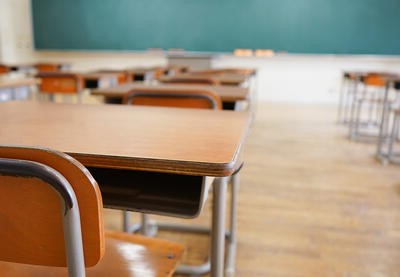
image via nhbr.com
School choice is popular in some circles, but problematic for economically disadvantaged students, special needs students, their parents, and (as it turns out) entire states. A lawsuit in Ohio and a legislative hearing in Texas offer glimpses into two critical issues.
In Ohio, nearly a third of the state’s public school districts have joined a lawsuit against the state’s school voucher program on the grounds that it is unconstitutional. The central argument by the public school districts is that while a public school district might receive $3000 per student from the state, vouchers provide $8400 per student for private school tuition, a practice that they contend is discriminatory. The second argument is that any family, regardless of income, can apply for the vouchers. Money for the vouchers is drawn from the same state line-item as public school funding. One board member noted that families earning $30,000 a year are essentially subsidizing the private school tuition for families earning $300,000 a year. This is especially relevant given that many low-income families still can’t afford private education even with vouchers; they are subsidizing a benefit that they can’t take advantage of.
Another concern — and potentially unconstitutional aspect — of vouchers is that private schools receiving taxpayer money operate outside public accountability. They are not required to be transparent for how the money is spent, nor held accountable for the quality of the education provided.
And that lets us segue neatly into a recent hearing before the Texas Senate Education Committee. Senate Bill 1 would use taxpayer dollars to create education savings accounts (ESA), a voucher-like program that would give families access to $8,000 a year to pay for private school tuition and other educational expenses*. The challenge is being brought by parents of students with disabilities. Those supporting vouchers have argued that education savings accounts would allow students with disabilities access to specialized schools if public schools are not meeting their needs. The problem — pointed out by opponents — is that private schools, unlike public schools, are not required by law to provide special education services, making this benefit entirely theoretical. Private schools also don’t have to take special education students — something public schools are required to do by law. This means that this mostly theoretical benefit becomes hypothetical at best. Like their low-income counterparts, families with special needs students would be subsidizing a benefit they are unable to take advantage of.

SB 1 specifically states that private schools are not subject to regulations laid out in the federal Individuals with Disabilities Education Act, which requires public schools to provide key services to students with disabilities. So this ‘benefit’ for students with disabilities may actually result in them losing certain key rights and protections provided by that act: the right to free and appropriate public education, the right to be evaluated, the right to have a diagnostician go over findings, and the right to individualized education programs.
Another key protection for disabled students is access to the least restrictive environment. There are reams of studies showing the mutual benefit for regular and special education students when they participate in integrated learning environments. Some disability advocates fear disabled students will end up isolated from their regular peers in a kind of de facto segregation. The conclusion is inescapable: voucher money — taxpayer money — would directly enable discrimination. And that discrimination extends beyond disabled students to include economically disadvantaged students. In fact, SB 1 puts a cap on how many ED students and disabled students can participate in the program: no more than 40% ED students and no more than 20% special needs students. This means many people will support the program with their tax dollars but be unable to actually use the program because of the caps.
A major factor here is the sheer number of special education students in Texas: 702,785, or 12.7% of all students enrolled as of 2022-23. It’s not hard to see the impact vouchers could have on this very vulnerable population.
Both of these situations bear watching.**
*If you’re curious (I was), “expenses” means transportation provided by a 3rd party (you can’t pay yourself or a relative), uniforms, educational therapies, private tutoring, tuition and fees, and textbooks.
**As of October 26, 2023, the Education Savings Account in Texas has failed to pass the legislature. Twenty four Republican legislators from rural districts are refusing to vote for it because they believe it will undermine critical funding for the public schools their constituents rely on. They are in a similar situation in which they would have a theoretical right to use funds for private school but have no private schools in their area. Obviously, they are worried that their only option — the public schools — will struggle even more with an ESA program in place. Their fears are not without foundation: Governor Abbott has said that he would consider increased funding for public schools separately, but the Texas legislature hasn’t boosted per-student public school funding since 2019. In May 2023, the state senate refused to use Texas’ $33 billion budget surplus to increase funding without the school voucher program, causing many public school districts to begin the 2023-24 school year in a financial deficit. The issue of rural school funding is covered in our earlier series of articles on school choice — the series starts here. Governor Abbott has vowed to keep forcing the legislature to vote on the ESA and — failing passage — has threatened to endorse proponents of the ESA as candidates in upcoming statehouse races.
